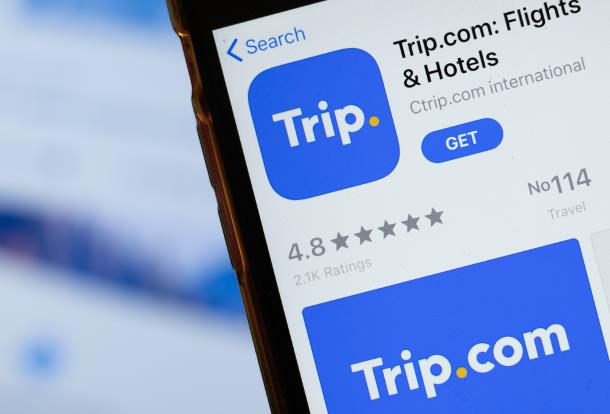By Ritesh Gupta, ChinaTravelNews – How is funding shaping up in the Internet ecosystem in India? Are Chinese players set to play a bigger role in this burgeoning South Asian e-commerce market? As for the travel vertical, what does Ctrip’s decision to invest in MakeMyTrip signify?
These are enticing questions, and clearly indicate that India’s overall e-commerce proposition is getting stronger. The same is exemplified by Alibaba and Ctrip’s plan to invest in Indian companies.
“The opportunity is clear (for Chinese organizations to invest in India going by the current status of e-commerce business in this market) and the Chinese organizations (such as Alibaba, Tencent or Ctrip) are known for building significant strategic value,” said Deep Kalra, founder and Group CEO, MakeMyTrip.

Deep Kalra, founder and Group CEO of MakeMyTrip
“We are looking at learning (improving upon several counts) - competition and strategies, growing organically and inorganically, mobile marketing, mobile distribution and other areas,” shared Kalra. He added, “Mobile is an integral part of strategy going forward. Already around 60% of our hotel traffic is being contributed by mobile, and as per cohort analysis, there are clear indications that customers do come back.”
It’s important for OTAs to craft astute mobile marketing and product development tactics, especially in India and China.
During Q2, as MakeMyTrip.com CEO Rajesh Magow mentioned, the company managed more than 400% y-o-y growth in the standalone domestic hotel transactions via mobile devices. This was significant acceleration from the 216% y-o-y growth in Q1. Chinese players, too, have excelled in this arena. If we consider the performance of Qunar in Q3, the company indicated that quarterly retention rate remain in 20% to 25% range from all quarterly cohort, with transaction frequency for new mobile transaction user continuing to increase y-o-y.
Growth story
Even though China has led some of the major investments, marked by deals with Snapdeal, Ola and Makemytrip, there have been other sources of funding, too, including Japan and Hong Kong. But yes one can expect more of such strategic alliances in Indian growth-stage companies, featuring organizations from China.
Gurgaon, India-based Aloke Bajpai, CEO and co-founder, ixigo.com, a travel search engine and a trip planning site, says “India is China in making, and the next decade could well be ‘India’s decade’. So considering various similarities between India and China, and the growth story here, China is targeting this market for opportunities.” MakeMyTrip invested in ixigo in 2011.
Bajpai further added, “This (current spate of investments in Indian companies) seems to be an opportunistic play. “Accessing” or investing in developed assets in Europe or the U. S. isn’t easy. So Southeast Asia and India seem to be better bets. If you win India and China, you are probably looking at being part of total 60-70% economic growth, coming from combined one-third of world’s population. Also, Indian companies acknowledge the signs of China becoming superpower, driving economic growth.” He also underlined that the prevalent sentiments in the U. S. seem to be “conversative” and the so-called “Asian invasion” is expected to continue in India.
What does Ctrip-MakeMyTrip deal signify?
There are different facets that come to the fore when one assesses the beginning of the strategic relationship between Ctrip and MakeMyTrip.
· Targeting outbound travel: “India is undersold in China and China is undersold in India,” asserts Bajpai. He says the outbound travel segment continues to grow in both these countries, and by offering travel products in a precise manner both organizations can benefit from such collaboration.
· Getting a foothold in a new market: As witnessed over the last 10 years, the Indian online travel sector has only witnessed a couple of acquisitions featuring foreign OTAs. Talking of China, Priceline was a late entrant and it has continued to strengthen its presence in China by stepping up its stakes gradually in Ctrip. In another deal, Skyscanner acquired Youbibi last year. Expedia chose to sell its entire stake in eLong. Post that Ctrip added eLong and Qunar in its roster. “If we see travel markets (especially India and China) , local players have grown, and established their presence with significant market share,” says Bajpai. “There is so much to learn just by being on the board of Indian companies - cultural preferences, spending behavior etc. The Indian market remains an enigma for China and same holds for Chinese market when it comes to India. So before committing in a bigger way to the market, companies want to get a foot-hold here and understand it from the inside.”
· Negotiation with suppliers and media owners: Companies in China and India belonging to the same business vertical are figuring in agreements that span across various nations. For instance, Ola entered into a ride-sharing agreement with Didi Kuaidi, US-based Lyft, and GrabTaxi last year. Also, with this new deal, the Priceline group, Ctrip, MakeMyTrip etc. can have a bigger say in the marketplace. Travel is a global business, and at the end of the day OTAs end up dealing with same suppliers such as hotels, airlines etc. and also with the likes of Google (although it needs to be noted there is “virtually no Google in China”) and Facebook for driving traffic to their respective transactional platforms. So if on one hand, OTAs can look at improving their commission, on the other there is an option to bring the customer acquisition cost down with stronger negotiation power by collaborating with each other.
How are India and China similar?
“Both are mobile-first markets, unlike Europe and the U. S.,” says Bajpai. “Also, the overall consumer spending behavior, with heavy impetus on “value for money” attitude is quite similar.” He also points out that there is no one way of targeting both these markets, and the tier-I cities, tier-II cities, tier-III cities, etc. need to be looked differently with “micro-marketing” strategies. “In India, it could be north, south, or coastal, rural…the approach needs to be spot on, and can’t be uniform, just like China,” he says.
Learning from China
At the same time, India can learn a lot from China when it comes to travel e-commerce.
· Hotel bookings: First is how to step up the share of hotel bookings online. A prime example of mobile bookings and scaling up quickly is Qunar. Its mobile revenues for Q3 were RMB975.5 million, going up by 381% y-o-y. Qunar believes its growing mobile user base as well as the strengthening of its hotel content will pave way for further boost in the “commission rate” of its hotel business.
· Mobile experience and commerce: Second how to improve upon the mobile experience, and pave way for a mobile transaction as soon as possible.
For its part, MakeMyTrip, in its Q2 results released in October last year, revealed that the company’s “lifetime mobile downloads” had exceeded 12.5 million. Going forward, as shared in the last earnings call, the plan is to go for “aggressive transaction growth and mobile adoption through marketing and attractive pricing offers”. And this will be done in conjunction with the team’s product development efforts.
“The mobile app booking funnel is quite differentiated and the drivers aren’t the same (ones that lead to conversion on the web),” says Kalra. In this context, he referred to Ctrip’s expertise, a company that has not only worked out ways to offer value to app users but also managed to step up the use case even for a sector like travel.
As for mobile payments, Bajpai says China has clearly built solid expertise. “One-touch payment is one example,” says Bajpai. “Of course, regulatory requirements can’t be ignored, and they do impact transactions in each market, but still it needs to be acknowledged that India is currently lagging behind China in this arena (Also, unlike credit card, each of the payment options in Asia has its uniqueness, e.g. transaction limit, availability of refund, chargeback rights etc.),” he says.
In case of China, it’s imperative for travel brands to offer options like Alipay and or let Chinese consumer pay via WeChat. In China, around 45% of online transactions are made using e-wallets, such as options offered by Alipay, China Unionpay and TenPay, and other emerging options include WeChat payment.
To India’s credit, mobile commerce is evolving at a quick pace. “Catching up (with Indian players such as digital wallet specialist PayTM) is happening faster,” he says.
There have been interesting developments here. For instance, Uber, the mobile app-based transportation network, known for an effective zero-click payment mechanism, introduced payment by cash option in India. This was done to make it service more accessible in India.
Bigger say
No doubt Chinese companies have had only limited success, with Lenovo, Huawei etc. managing to make an impression over the years. The likes of Honda, Samsung and LG overshadowed Chinese companies. But now China is set to chart a new chapter in India with its prowess in e-commerce.




